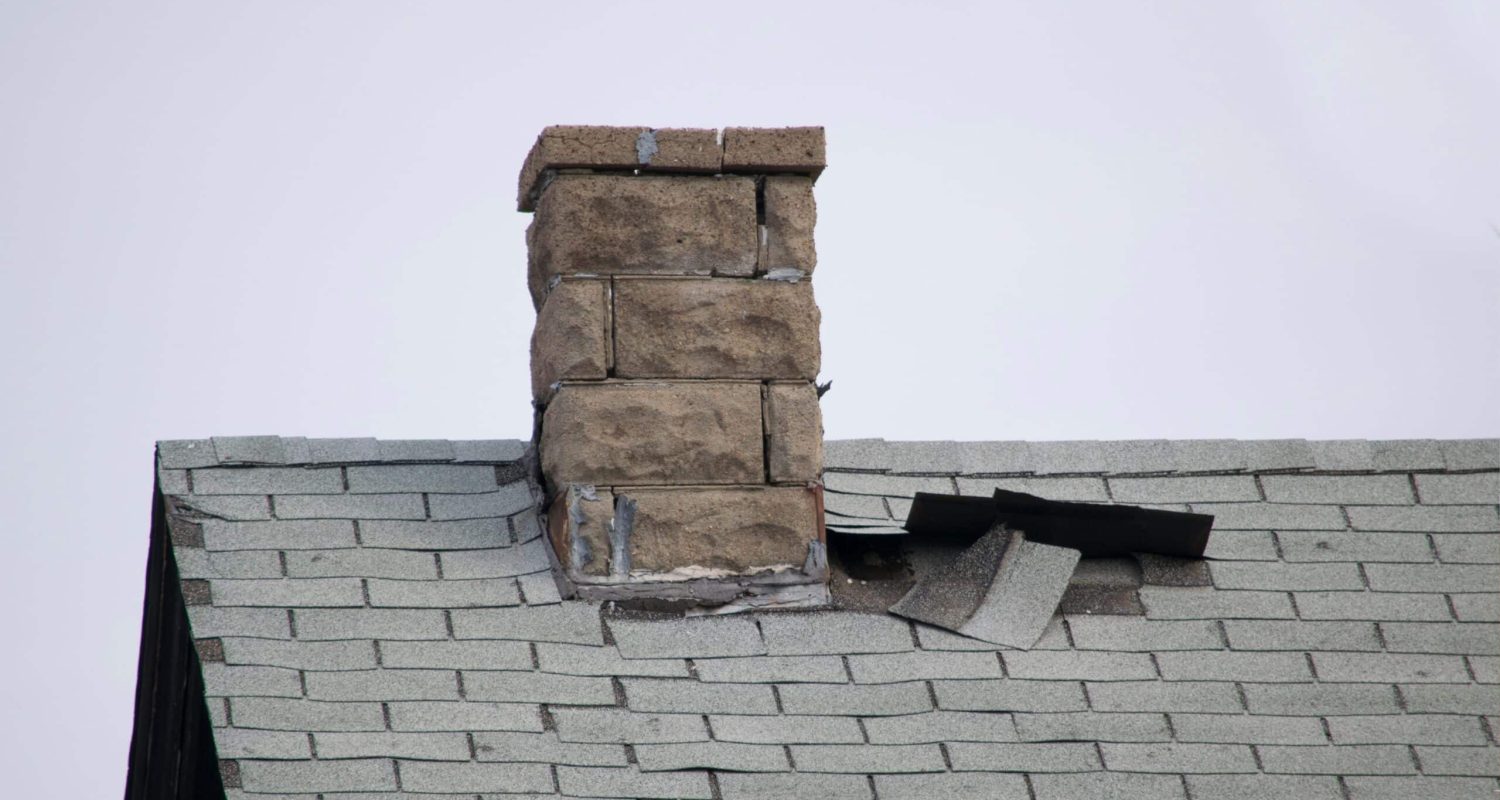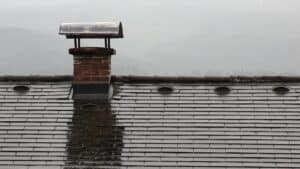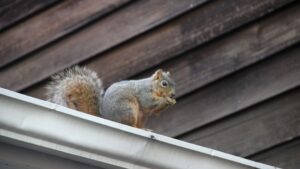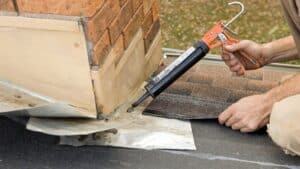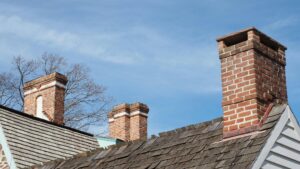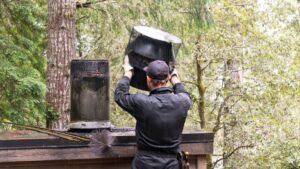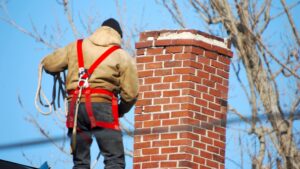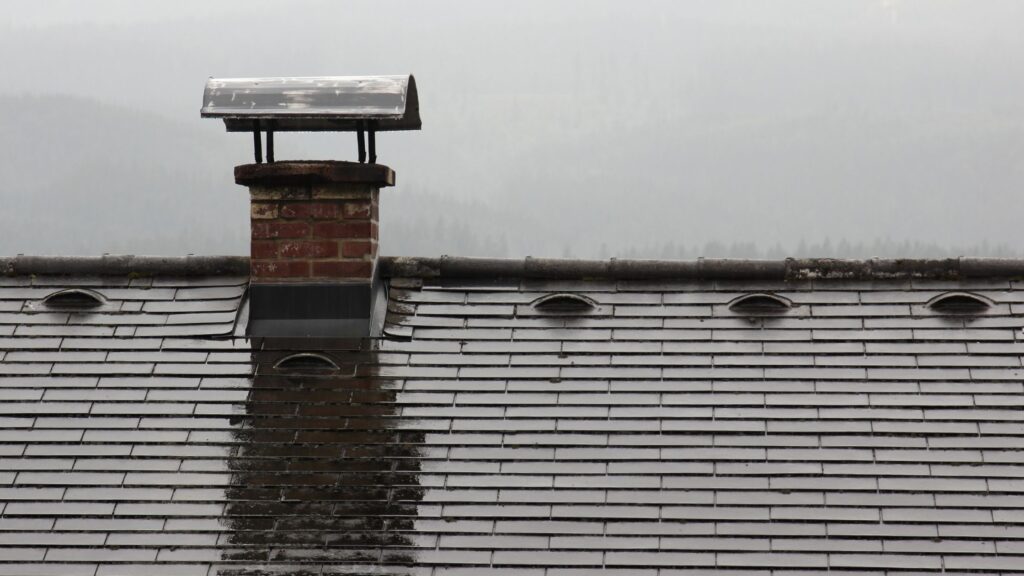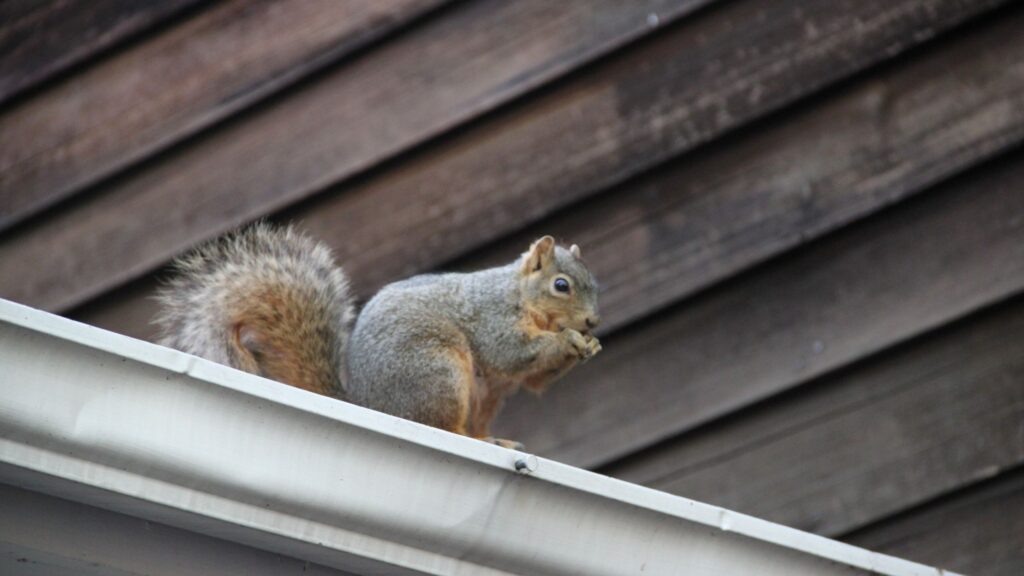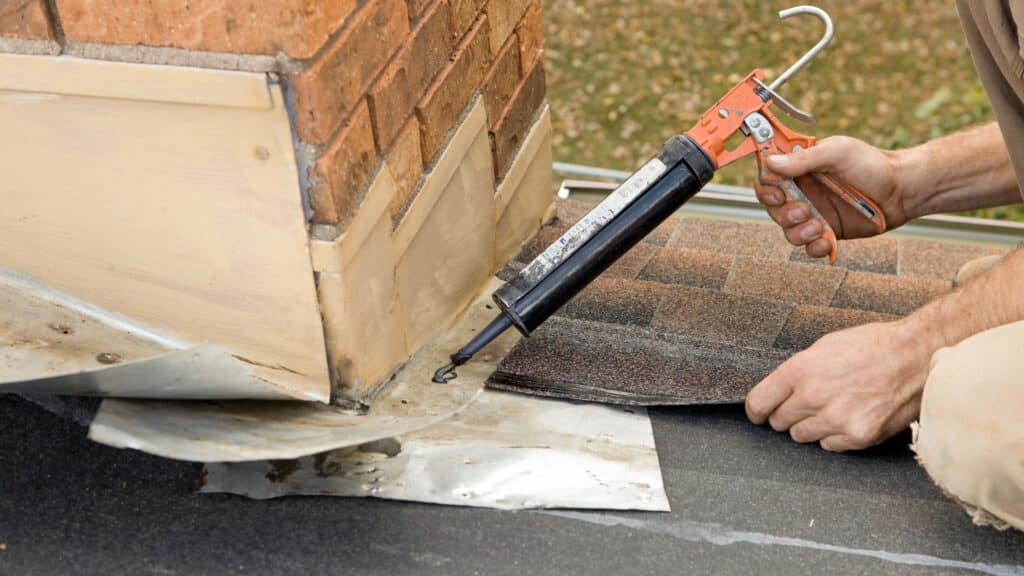Winter can be one of the most damaging seasons for your chimney. Freezing temperatures, heavy snowfall, and constant exposure to moisture can weaken chimney structures, leading to costly repairs if left unchecked. Many homeowners in Catskill don’t realize their chimney has sustained damage until leaks appear, bricks start crumbling, or their fireplace stops functioning properly.
Understanding the most common types of winter chimney damage and how to fix them can help you prevent expensive repairs and ensure your chimney remains safe and efficient. In this article, we’ll cover the key winter chimney issues and the best solutions to fix them before they worsen.
1. Cracked or Deteriorating Masonry
How Winter Causes Masonry Damage
Chimneys are built to withstand heat, but winter’s freeze-thaw cycle can take a toll on brick and mortar. Moisture from rain, snow, or ice seeps into tiny cracks in the chimney structure. When temperatures drop, the trapped moisture freezes and expands, causing the cracks to widen. Over time, this process leads to:
- Cracked bricks
- Loose or missing mortar joints (tuckpointing failure)
- Spalling bricks (flaking or crumbling masonry)
How to Fix It
- Tuckpointing: Damaged mortar is replaced with fresh, weather-resistant mortar to reinforce the chimney structure.
- Brick Replacement: Severely deteriorated bricks should be replaced to restore the chimney’s strength.
- Waterproofing: Applying a chimney waterproofing sealant prevents further moisture penetration.
When to Call a Professional: If cracks extend beyond the surface or multiple bricks are deteriorating, schedule a professional chimney inspection.
2. Chimney Leaks and Water Damage
How Winter Causes Chimney Leaks
Snow and ice buildup can melt and seep into small gaps in the chimney crown, flashing, or brickwork. Once inside, moisture can cause:
- Stains on ceilings and walls near the fireplace
- A musty smell inside the chimney
- Rust on the damper or fireplace doors
- Mold growth inside the chimney or home
How to Fix It
- Repair or Replace Chimney Flashing: If flashing (the metal seal between the chimney and roof) is loose or rusted, it must be resealed or replaced.
- Seal the Chimney Crown: The concrete cap at the top of the chimney should be checked for cracks and sealed with a waterproof coating.
- Install a Chimney Cap: A properly fitted chimney cap prevents snow and rain from entering the flue.
When to Call a Professional: If you notice water stains or moisture inside your home, a chimney expert can inspect and repair flashing, crowns, and seals to prevent long-term structural damage.
3. Chimney Liner Damage
How Winter Affects Your Chimney Liner
The chimney liner (typically made of clay, metal, or ceramic) protects the chimney walls from extreme heat and combustion gases. Winter weather can cause:
- Cracked or deteriorating clay tile liners
- Corrosion in metal liners due to condensation buildup
- Debris accumulation inside the liner, restricting airflow
How to Fix It
- Chimney Relining: If the liner is severely damaged, replacing it with a stainless steel liner is the best option for durability and heat resistance.
- Seal Small Cracks: Some minor liner issues can be repaired with high-temperature sealants.
- Schedule a Chimney Inspection: A camera inspection can detect hidden liner damage.
When to Call a Professional: A cracked liner increases fire hazards and carbon monoxide risks, so it’s best to have it inspected and repaired by a certified chimney technician.
4. Excessive Creosote Buildup
How Winter Increases Creosote Accumulation
During winter, fireplaces and wood stoves are used frequently, leading to a buildup of creosote—a highly flammable, tar-like residue that forms when wood burns incompletely.
Signs of Excessive Creosote Buildup
- Strong, smoky odor coming from the fireplace
- Black soot deposits inside the chimney or on the glass doors
- Thick, sticky creosote buildup inside the flue
How to Fix It
- Schedule a Professional Chimney Cleaning: Chimney sweeps use specialized tools to remove all creosote deposits.
- Burn Seasoned Hardwood: Using dry, properly seasoned wood reduces smoke and creosote formation.
- Improve Airflow: Keeping the damper fully open while burning improves combustion and reduces creosote buildup.
When to Call a Professional: If creosote buildup reaches Stage 3 (hardened, glaze-like deposits), it requires professional chemical treatment or rotary cleaning methods.
Prevent Winter Chimney Damage: Expert Solutions from True Ventilation
Preventative maintenance is the best way to avoid costly repairs! True Ventilation offers professional chimney inspections, repairs, and cleaning services to keep your fireplace safe and efficient all winter long.
Why Choose True Ventilation?
- Certified Chimney Technicians: Our team has the experience to detect and repair winter chimney damage.
- Advanced Inspection Tools: We use cameras and specialized equipment to find hidden issues.
- Reliable & Affordable Services: We offer cost-effective solutions for chimney leaks, masonry repairs, creosote removal, and more.
Call us at 888-775-9498 or email trueventilation@gmail.com to schedule your chimney inspection.



